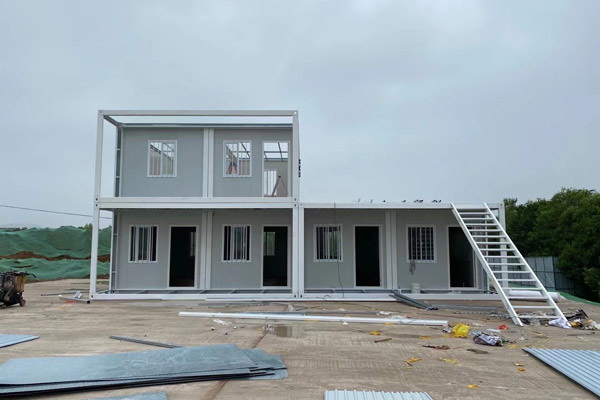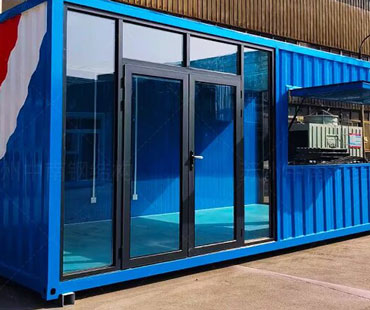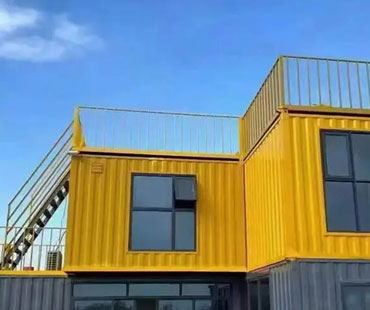As the world grapples with rapid urbanization, skyrocketing real estate prices, and a growing demand for sustainable housing, shipping container homes have emerged as an innovative solution. Originally designed to transport goods across oceans, these containers are now being repurposed into stylish, functional living spaces.
1. The United States: From Urban Dwellings to Off-Grid Retreats
In the United States, shipping container homes have gained significant popularity, particularly in urban areas like Los Angeles, Austin, and New York. Architects and builders are leveraging the modular nature of containers to create unique residential spaces, often combining multiple units to form larger homes. In cities with high housing costs, these homes provide an affordable alternative, allowing young professionals and families to enter the housing market.
Moreover, many Americans are turning to shipping containers for off-grid living. With solar panels, rainwater collection systems, and composting toilets, these homes offer a sustainable lifestyle away from the hustle and bustle of city life. The DIY movement has also fueled interest, with many individuals sharing their container home projects online, inspiring others to take on similar ventures.
2. Australia: Embracing Minimalism and Sustainability
In Australia, shipping container homes are often associated with the tiny house movement, which emphasizes minimalism and sustainable living. Australian architects and designers have embraced the challenge of transforming containers into comfortable homes that blend seamlessly with the natural landscape. Many container homes feature large windows and outdoor living spaces to take advantage of the country’s beautiful climate.
The Australian government has also recognized the potential of container homes to address housing shortages in remote areas. In regions affected by natural disasters, shipping containers are being utilized as temporary housing solutions, providing quick and efficient shelter for those displaced by events such as bushfires or floods.

3. Europe: Innovative Urban Solutions
In Europe, shipping container homes are frequently integrated into urban development projects. Cities like Amsterdam and Berlin have seen the rise of container villages, where clusters of container homes create vibrant communities. These villages often include shared public spaces, gardens, and amenities that foster social interaction among residents.
Additionally, European designers are pushing the boundaries of what container homes can be. In countries like the Netherlands, architects are experimenting with stacking containers in creative configurations, resulting in striking architectural designs that challenge traditional notions of housing. The focus on sustainability is also prominent, with many projects incorporating green roofs, energy-efficient systems, and recycled materials.
4. Africa: Addressing Housing Crises
In various African nations, shipping container homes are being utilized as innovative solutions to housing shortages and informal settlements. In countries like South Africa and Kenya, organizations are using containers to create affordable housing for low-income families. These homes are not only cost-effective but also durable and quick to assemble, making them ideal for rapidly growing urban areas.
Furthermore, container homes are being used to establish community centers, schools, and healthcare facilities in underserved regions. By repurposing shipping containers, these projects provide essential services while promoting sustainable development.
5. Asia: Blending Tradition with Modernity
Countries in Asia, such as Japan and China, are embracing shipping container homes as a way to combine traditional architectural elements with modern design. In Japan, where space is at a premium, container homes offer a compact living solution that can be creatively integrated into urban environments. Architects are incorporating traditional Japanese design principles, such as tatami mats and sliding doors, into container homes, resulting in a harmonious blend of old and new.
In China, shipping container homes are being used for temporary housing during large-scale events, such as the Winter Olympics. Additionally, they are being explored as affordable housing options in rapidly urbanizing cities, providing a quick and efficient solution to meet the needs of the growing population.
The embrace of shipping container homes across different cultures highlights a global movement toward innovative, sustainable living solutions. As housing challenges continue to rise, these adaptable structures offer a practical and stylish alternative. From urban dwellings in the United States to community-focused initiatives in Africa, shipping container homes are proving to be more than just a trend; they represent a significant shift in how we approach housing, sustainability, and community living in the 21st century. As this movement grows, it will be fascinating to see how cultures continue to innovate and adapt shipping containers to meet their unique needs and aspirations.


